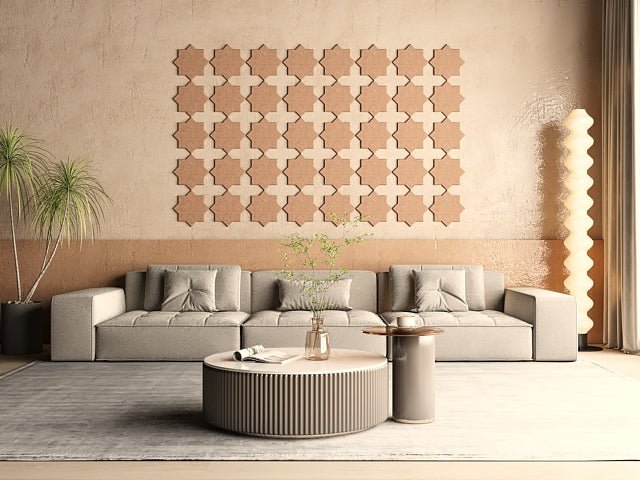The Evolution of Modern Art and its Influence on Architecture and Interior Design
Modern art is a broad term that encompasses a wide range of art movements that emerged during the late 19th and early 20th centuries. From impressionism to cubism, surrealism to abstract expressionism, modern art has evolved over time, reflecting the changing cultural and social landscape of the world.
One of the most significant developments in modern art has been the rise of abstract and basic geometric artworks. This style of art emerged in the early 20th century and was characterized by the use of simple shapes, lines, and colors to create compositions that were not meant to represent anything in the real world.
Artists like Kazimir Malevich, Piet Mondrian, and Wassily Kandinsky were some of the pioneers of this movement, which came to be known as geometric abstraction. These artists believed that art should be free from any representational obligations and should focus on pure form and color.
The influence of geometric abstraction on architecture and interior design was significant. Architects and designers began to incorporate the principles of geometric abstraction into their work, creating buildings and spaces that were characterized by simple, clean lines, and minimal ornamentation.
One of the most famous examples of this influence is the Bauhaus movement, which emerged in Germany in the early 20th century. The Bauhaus School of Design was founded by Walter Gropius, who believed that art and design should be integrated into everyday life.
The Bauhaus school emphasized the use of clean lines, simple shapes, and basic colors in their designs. Their buildings and furniture were characterized by their functionalism, simplicity, and minimalism, which became hallmarks of modernist design.
Today, the influence of geometric abstraction can be seen in many contemporary buildings and interior designs. The use of simple shapes, lines, and colors creates a sense of harmony and balance in the space, while also providing a sense of visual interest.
In conclusion, the evolution of modern art has had a significant impact on architecture and interior design. The rise of geometric abstraction has led to a new way of thinking about design, emphasizing simplicity, minimalism, and functionality. As we continue to evolve and innovate in the world of art and design, we can expect to see the influence of modern art continue to shape the spaces we inhabit.
Modern art is a broad term that encompasses a wide range of art movements that emerged during the late 19th and early 20th centuries. From impressionism to cubism, surrealism to abstract expressionism, modern art has evolved over time, reflecting the changing cultural and social landscape of the world.
One of the most significant developments in modern art has been the rise of abstract and basic geometric artworks. This style of art emerged in the early 20th century and was characterized by the use of simple shapes, lines, and colors to create compositions that were not meant to represent anything in the real world.
Artists like Kazimir Malevich, Piet Mondrian, and Wassily Kandinsky were some of the pioneers of this movement, which came to be known as geometric abstraction. These artists believed that art should be free from any representational obligations and should focus on pure form and color.
The influence of geometric abstraction on architecture and interior design was significant. Architects and designers began to incorporate the principles of geometric abstraction into their work, creating buildings and spaces that were characterized by simple, clean lines, and minimal ornamentation.
One of the most famous examples of this influence is the Bauhaus movement, which emerged in Germany in the early 20th century. The Bauhaus School of Design was founded by Walter Gropius, who believed that art and design should be integrated into everyday life.
The Bauhaus school emphasized the use of clean lines, simple shapes, and basic colors in their designs. Their buildings and furniture were characterized by their functionalism, simplicity, and minimalism, which became hallmarks of modernist design.
Today, the influence of geometric abstraction can be seen in many contemporary buildings and interior designs. The use of simple shapes, lines, and colors creates a sense of harmony and balance in the space, while also providing a sense of visual interest.
In conclusion, the evolution of modern art has had a significant impact on architecture and interior design. The rise of geometric abstraction has led to a new way of thinking about design, emphasizing simplicity, minimalism, and functionality. As we continue to evolve and innovate in the world of art and design, we can expect to see the influence of modern art continue to shape the spaces we inhabit.




Leave a comment
This site is protected by hCaptcha and the hCaptcha Privacy Policy and Terms of Service apply.